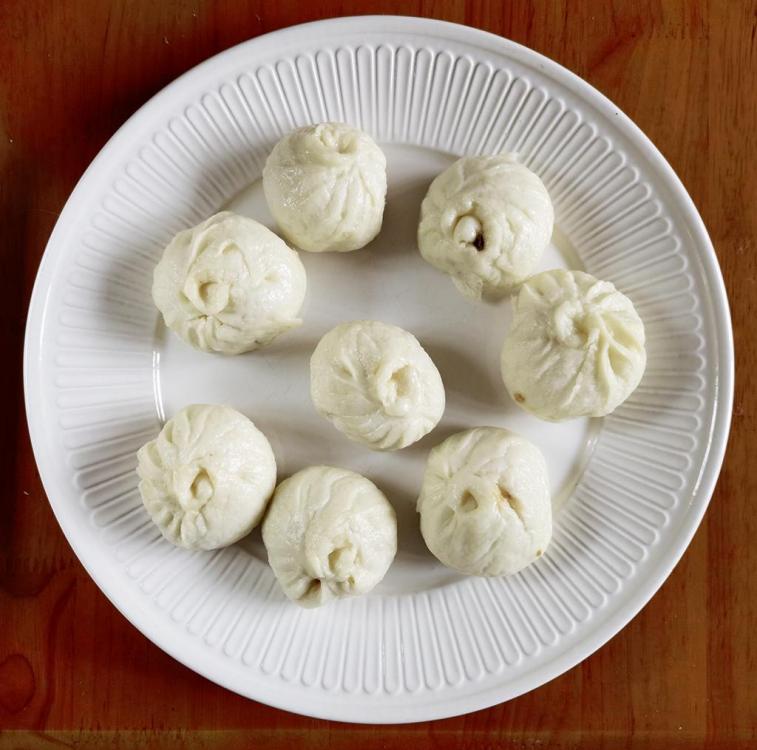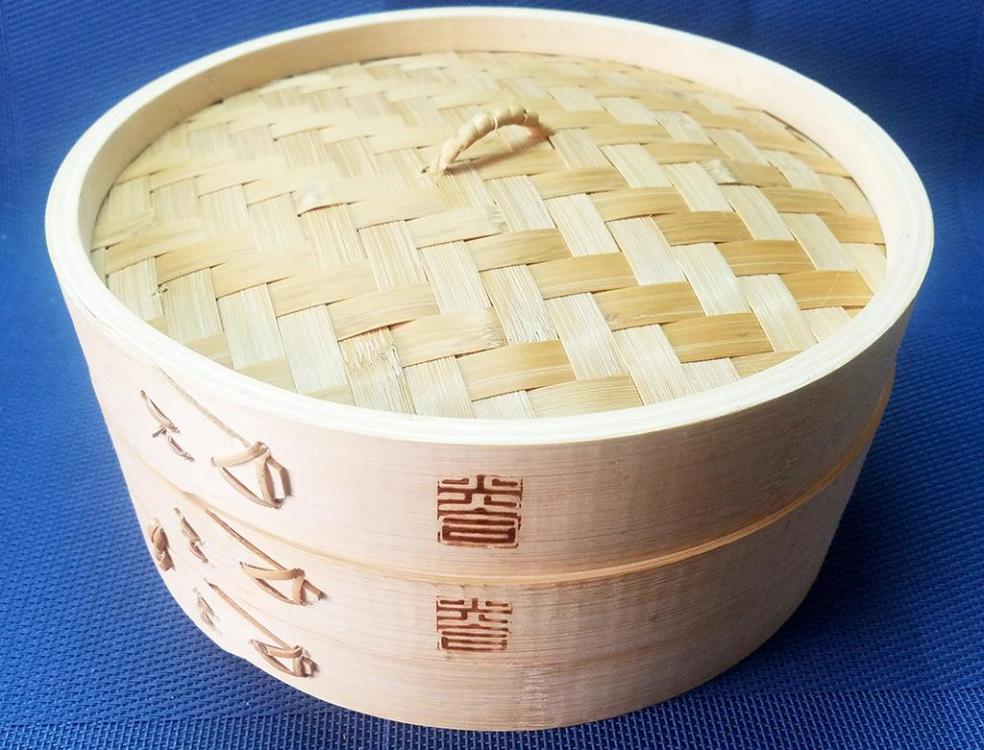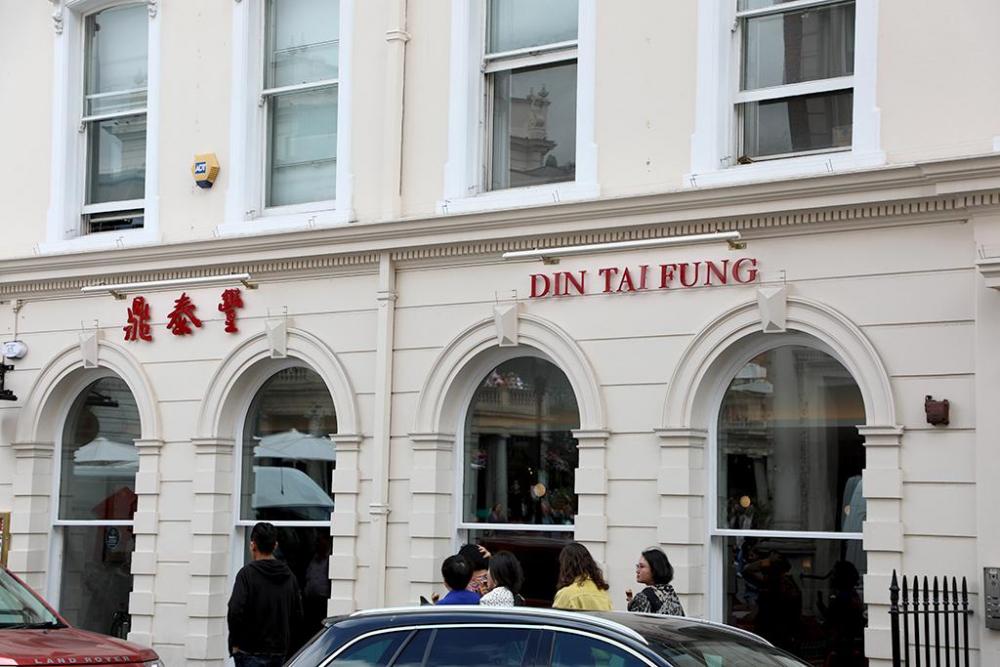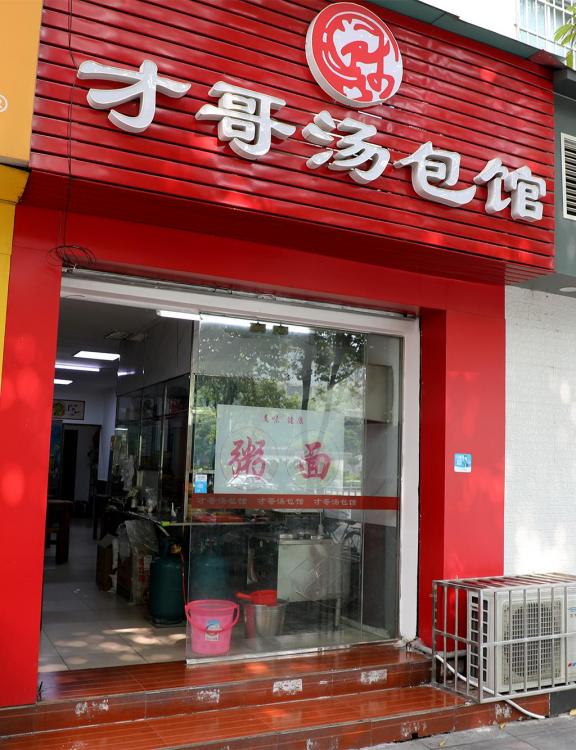20. 小笼包 (xiǎo lóng bāo) contain soup.
Home made Xiaolongbao - no soup!
Google the term ‘xiao long bao’, with or without the spaces, and you will be met by hundreds of sites explaining that they are Chinese steamed buns from Shanghai which contain soup. Well, actually, the ones which contain soup, contain soup; the ones which don’t, don’t. Although, when they do contain ‘soup’, what they contain may not really be what you or I would call soup. And they aren’t even from Shanghai!
小笼包 (xiǎo lóng bāo) simply means, literally, ‘small basket buns’. (Not 'small dragon buns' as suggested on the Xioalongbao Cook-Off topic. That is a different character, 龙 but pronounced the same.
小笼 (xiǎo lóng) - small basket
The larger soup dumplings are more correctly called 汤包 (tāng bāo), literally ‘soup buns’ and the ‘soup’ is actually gelatin-gelled aspic. The smaller ones containing soup are 小笼汤包 (xiǎo lóng tāng bāo). Widely accepted to have originated in 常州 (Cháng zhōu), a city in Jiangsu province, although they were in turn hugely influenced by an earlier similar preparation from Henan province’s 开封 (Kāi fēng), capital of China in the Northern Song Dynasty, they became popular in Shanghai, then spread. International recognition came when the Taiwanese franchise chain, 鼎泰豐 (dǐng tài fēng) introduced them expensively across Asia, Australia, the USA and the UK.
Din Tai Fung, London
I love xiaolongbao and eat them often for breakfast or a between-meal snack. I’ve eaten them all over China, including Changzhou and Shanghai. Most did not contain ‘soup’. I lived in Xi’an in Shaanxi province for a year, in western Hunan province for two years and then for two decades plus in Guangxi. All have xiaolongbao places selling non-soup versions. Here in Guangxi, I only know one small restaurant selling 'Shanghai-style' 汤包 (tāng bāo), soup dumplings, but many selling the soup-free version.
The non-soup versions follow the same basic recipe, only missing out the aspic.
汤包 (tāng bāo) restaurant in Liuzhou, Guangxi
Xiaolongbao are most commonly served in small restaurants, either to be taken away or to be consumed in one of the few seats most places have. They are also sold in some supermarkets. I do also make them myself sometimes - they are easy to do, although the pleating takes practice.

My local xiaolongbao restaurant. Typically, only one table inside and a couple on the street outside.
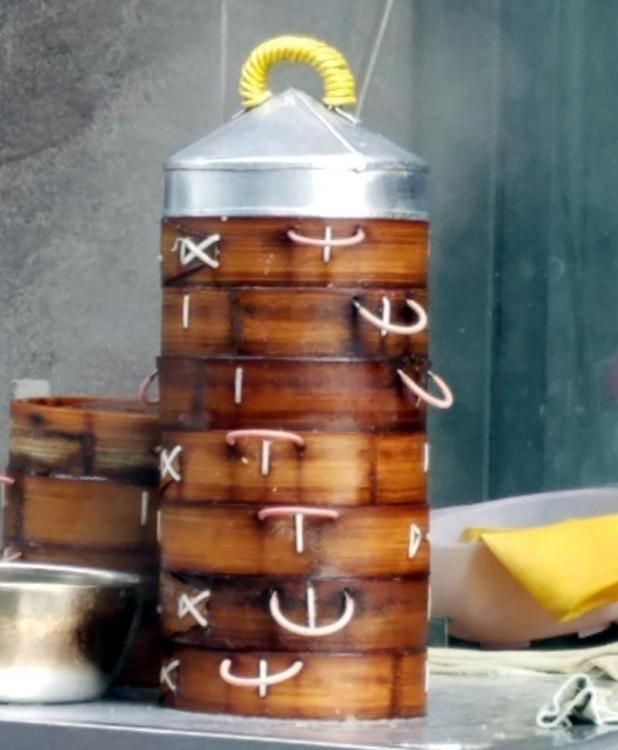
Xiaolongbao steaming
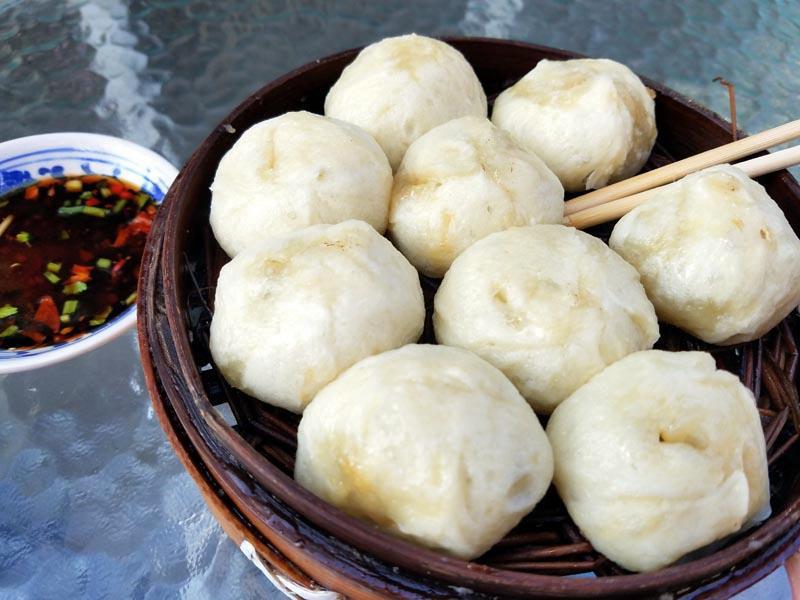
The contents of the baskets above. No soup! I just noticed there are nine in the basket. The normal serving is eight, Chinese culture's luckiest number.
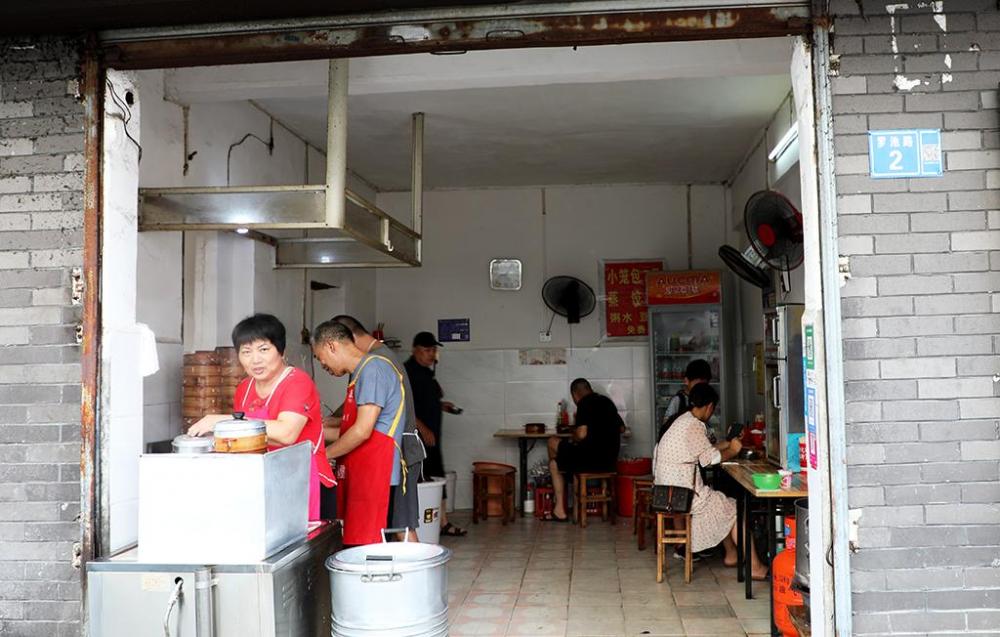
Another popular xiaolongbao restaurant here in town. Two tables inside. There is also one outside to the right of shot.
These restaurant pictures were taken between 6:30 and 7:30 in the morning before the rush descended. They get very busy. I ate a soup-free xiaolongbao breakfast at the one just above. I sat outside.


